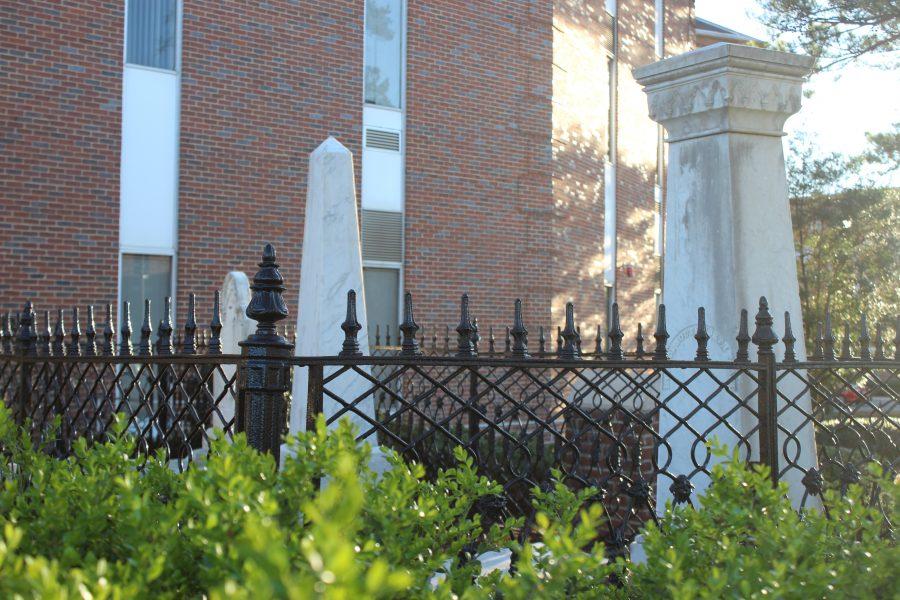Often when outsiders think about The University of Alabama, two things that might immediately come to mind are football, and George Wallace’s 1963 Stand in the Schoolhouse Door. In an attempt to bar the enrollment of James Hood and Vivian Malone nine years after Brown vs. Board of Education deemed de facto segregation unconstitutional, Governor Wallace cemented The University of Alabama’s place in history textbooks across the nation as a symbol of resistance to the Civil Rights Movement.
Today, although The University of Alabama is markedly more diverse in terms of race, sexual identity and religion than it was in 1963, history is not going unremembered by many.
In fall 2015, Hilary Green, an assistant professor of Gender & Race Studies, embarked on the first iteration of her Hallowed Grounds Tour, which provides a way for students on campus to engage the University’s involvement with slavery, the Civil War and the Civil Rights Movement. Along the way, Green started a process of collecting and digitizing the scores of records of The University of Alabama’s ties to slavery, many of which were rented through faculty.
When asked what inspired her decision to compile this data, Green referred to a former student who gave her the idea.
“[The student said] ‘slavery existed everywhere but at UA.’ And … as an instructor, I vowed to never let that happen again,” Green said. “That was in spring 2015. By fall 2015, I had a lecture — a basic tour of campus.”
The University of Alabama’s history is also interesting when comparing its ties to slavery to those of Northern schools such as Columbia University, one of the forerunners regarding digitization of 19th century slave records. Our campus was almost totally destroyed when Union troops occupied the area during the Civil War. The President’s Mansion and the slave quarters that rest just behind it, Gorgas House and the Little Round House are the only pre-Civil War buildings that were not burned to the ground. Consequently, the University’s ties to slavery may not readily be addressed because it is not visually apparent.
“UA does not tell its story enough,” Green said. “It’s easier to [forget] these small buildings with this large campus of newer, state of the art buildings.”
True enough, students may graduate without ever having set foot in any of the campus’s pre-Civil War buildings, but Green said forgetting our past cannot sustain us moving forward.
“When you get to campus as a student, there is nothing in Bama Bound to tell us this history, so students are either stumbling across it on their own, or reading [building] markers, or they take a class like mine dealing with early African-American History,” she said.
She cites the disappointment that her students feel when they learn about the extent of the University’s involvement with slavery, and their belief that they might never become well-versed in their own university’s history if they had not taken Green’s African-American Studies courses or one of her various freshman seminars. While Green acknowledged The University of Alabama’s current attempt to change the core curriculum to require for all students one or two courses that encourage diversity, she is unsure about how long a process like that could take to actually be implemented. One hour, pass/fail freshman seminars, however, are comparatively easier to execute and may take as little as one year to get off the ground.
Associate Professor Meredith Bagley, whose expertise in the area of the Civil Rights Era has proved invaluable to the Hallowed Grounds Tour, said Green’s research is “critical.” Bagley said she believes that UA could make its history publicly and easily accessible in a few different ways.
“Dozens of universities across the nation are grappling with these questions, and we can learn from their work by engaging with those institutions … minimizing or downplaying [our history] does not strike me as a healthy long-term approach,” Bagley said.
Kassidy Harvey, a junior majoring in secondary education language arts, said she would support the introduction of a one-hour freshman seminar and a website dedicated to Green’s work.
“There is no way that we can progress as a society if we remain ignorant to the past, even elements that make us upset or uncomfortable,” she said. “People come to this university from all over the country and the world, and it is important that issues such as this are addressed.”
Harvey also referenced the various recent pushes to change building names that bear the mark of former slave owners and klansmen, despite widespread support from students which included protests and petitions.
“[I was] disappointed to see [those changes] never came to fruition,” Harvey said.
When asked if the university should focus on other, more immediate social issues, Joshua McMeans, a senior majoring in English, said the rising feminist movements are examples of topics that are more relevant, but also emphasized the importance of acknowledging our past while moving forward.
“It’s history. It happened,” McMeans said. “It will always be relevant no matter how much people want to put it behind them and act like it never happened.”
He hopes that in finding a link between our university and the slave trade would encourage other universities to do the same.
“[We] could shed light on other institutions who participated in the same act and could unleash a domino effect,” McMeans said.
Indeed, universities across the country are getting reacclimatized to their connections to America’s peculiar institution.
In two years, Green’s investigation has already yielded the names of some of the men connected to our buildings such as Moses, an enslaved man who worked in Gorgas House, as well as Neil, Crawford and Gabe, three men who made up the Little Round House’s drum core during the Civil War. Her research into our university’s past entanglement with slavery is ongoing.









